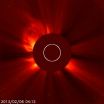(Press-News.org) The annual duck hunting season in the United States is traditionally big business, but while bird numbers are rising faster than they have for decades, the number of hunters continues to fall. Far from being good news for ducks a new study in the Wildlife Society Bulletin shows how the loss of revenue from 'duck stamps' could result in millions of lost dollars for vital conservation work.
"The last 15 years have brought hunting opportunities not seen since the turn of the last century," said Dr Mark Vrtiska from Nebraska Game and Parks Commission. "The waterfowl population has passed 40 million six times since 1995, something only seen nine times since records began. These should be the glory days for duck hunting."
However, in stark contrast, the annual sales of the 'duck stamp', the Federal licence needed to hunt, are declining. While over 2,100,000 stamps were sold annually in the 1970's, between 2004 and 2008 this declined to 1,300,000. This fall is continuing with an annual decline of 36% in duck stamp sales.
"You may think the fall in hunters would be good news for ducks, but ironically it is leading to less money for the conservation of their habitat," said Vrtiska. "Federal funding for conservation is dependent on the revenue raised by selling the duck stamps, a unique dynamic for wildlife managers in the United States. Up to 98% of money raised by the duck stamps is used to purchase or lease habitat within the National Wildlife Refuge system."
Historically the number of duck hunters has risen and fallen in relation to the number of ducks; however, over the 1990's the two became independent. To determine the impact the team estimated the amount of duck stamps which would have been sold had the relationship remained connected, both to determine the revenue loss and to estimate how much habitat could have been made available to conservationists.
"If hunter levels had kept consistent with historical trends then 600,000 more duck stamps would have been expected to have been sold between 1995 and 2008 than actually occurred," said Vrtiska. "That equates to an annual loss of $9,000,000, or $126 million across the whole period. For conservation the results are dramatic as this money could have resulted in 42,495 ha of wetlands."
Looking to the future, the team predict that hunter numbers will continue to decline due to various social, cultural and economic factors. By using three different scenarios to explore the economic impact, the team estimate that up to $14.3 million could be lost annually.
"Duck hunting has been a tradition for rural America for centuries, yet a cultural shift and changing attitudes has seen a slow decline in hunter numbers," concluded Dr Vrtiska. "The resulting fall in funding is impacting all those involved in habitat conservation which is only made more important by the dramatic rise in duck numbers."
### END
How a fall in duck hunting is shooting a financial hole into conservation efforts
2013-02-07
ELSE PRESS RELEASES FROM THIS DATE:
Information Technology improves patient care and increases privacy, MU informatics expert says
2013-02-07
The federal government invested more than $25 billion in health information technology (IT) as a result of the American Reinvestment and Recovery Act; yet, little is known about how IT applications improve patient safety and protect their privacy. Now, a University of Missouri nursing informatics expert suggests that sophisticated IT leads to more robust and integrated communication strategies among clinical staff, which allows staff to more efficiently coordinate care and better protect patient privacy.
Greg Alexander, an associate professor in the MU Sinclair School ...
Waste dump at the end of the world
2013-02-07
This press release is available in German.
(Jena) On their mission to the moon in 1969 the Americans Neil Armstrong and Buzz Aldrin created arguably the most famous footprints ever. Since the time the astronauts of the Apollo 11 Mission stepped onto the surface of our satellite their footprints remain almost unchanged. And as no breath of wind will ever be able to blow them away they will be visible forever.
Not quite so old but equally 'immortal' are many traces that have been left behind by humans at the South Pole of the Earth. This is the result of a report ...
Lancet Oncology: Long-term side-effects of targeted therapies in pediatric cancer patients
2013-02-07
A University of Colorado Cancer Center review published this week in the journal Lancet Oncology describes possible long-term side-effects of new, targeted therapies in pediatric cancer patients: what we don't know may hurt us.
"As pediatricians who treat kids with cancer, we expect the side-effects of traditional chemotherapies: low white blood count, infections, even long-term heart trouble or infertility. But there's the impression that these new, molecularly targeted agents are much less toxic. That may be true, especially in adult patients, but until we have more ...
Poll: Americans back climate change regulation, not taxes
2013-02-07
DURHAM, N.C. -- Now that President Obama has put climate change back on the table in his second inaugural address, a new national poll finds growing public support for regulating greenhouse gas emissions and requiring utilities to switch to lower-carbon fuel sources.
The percentage of Americans who think climate change is occurring has rebounded, according to the Duke University national online survey, and is at its highest level since 2006. The study also finds that while Americans support regulating greenhouse gas emissions, they do not favor market-based approaches ...
Scientists discover how the world's saltiest pond gets its salt
2013-02-07
VIDEO:
Antarctica's Don Juan Pond, the world's saltiest body of water, needs its salt to keep from freezing into oblivion. Scientists had assumed that the saltwater brine that sustains the pond...
Click here for more information.
PROVIDENCE, R.I. [Brown University] — Antarctica's Don Juan Pond might be the unlikeliest body of water on Earth. Situated in the frigid McMurdo Dry Valleys, only the pond's high salt content — by far the highest of any body of water on the planet — ...
Subcortical damage is 'primary cause' of neurological deficits after 'awake craniotomy'
2013-02-07
Philadelphia, Pa. (February 7, 2013) – Injury to the subcortical structures of the inner brain is a major contributor to worsening neurological abnormalities after "awake craniotomy" for brain tumors, reports a study in the February issue of Neurosurgery, official journal of the Congress of Neurological Surgeons. The journal is published by Lippincott Williams & Wilkins, a part of Wolters Kluwer Health.
During a procedure intended to protect critical functional areas in the outer brain (cortex), damage to subcortical areas—which may be detectable on MRI scans—is a major ...
No increase in brain aneurysm rupture risk during pregnancy and delivery
2013-02-07
Philadelphia, Pa. (February 7, 2013) – For women with aneurysms involving the brain blood vessels, pregnancy and delivery don't appear to increase the risk of aneurysm rupture, reports a paper in the February issue of Neurosurgery, official journal of the Congress of Neurological Surgeons. The journal is published by Lippincott Williams & Wilkins, a part of Wolters Kluwer Health.
The study also finds that women with known, unruptured aneurysms have a very high rate of cesarean delivery—which isn't supported by evidence and "may not be necessary," according to Dr. Brian ...
NASA sees the sun produce 2 CMEs
2013-02-07
In the evening of Feb. 5, 2013, the sun erupted with two coronal mass ejections or CMEs that may glance near-Earth space. Experimental NASA research models, based on observations from the Solar Terrestrial Relations Observatory (STEREO) and ESA/NASA's Solar and Heliospheric Observatory, show that the first CME began at 7 p.m. EST and left the sun at speeds of around 750 miles per second. The second CME began at 10:36 p.m. EST and left the sun at speeds of around 350 miles per second. Historically, CMEs of this speed and direction have been benign.
Not to be confused with ...
Animal magnetism: First evidence that magnetism helps salmon find home
2013-02-07
When migrating, sockeye salmon typically swim up to 4,000 miles into the ocean and then, years later, navigate back to the upstream reaches of the rivers in which they were born to spawn their young. Scientists, the fishing community and lay people have long wondered how salmon find their way to their home rivers over such epic distances.
How do they do that?
A new study, published in this week's issue of Current Biology and partly funded by the National Science Foundation, suggests that salmon find their home rivers by sensing the rivers' unique magnetic signature. ...
NASA scientists build first-ever wide-field X-ray imager
2013-02-07
Three NASA scientists teamed up to develop and demonstrate NASA's first wide-field-of-view soft X-ray camera for studying "charge exchange," a poorly understood phenomenon that occurs when the solar wind collides with Earth's exosphere and neutral gas in interplanetary space.
The unique collaboration involved heliophysics, astrophysics and planetary science divisions at NASA's Goddard Space Flight Center in Greenbelt, Md., and resulted in the first successful demonstration of the Sheath Transport Observer for the Redistribution of Mass (STORM) instrument and a never-before-flown ...



